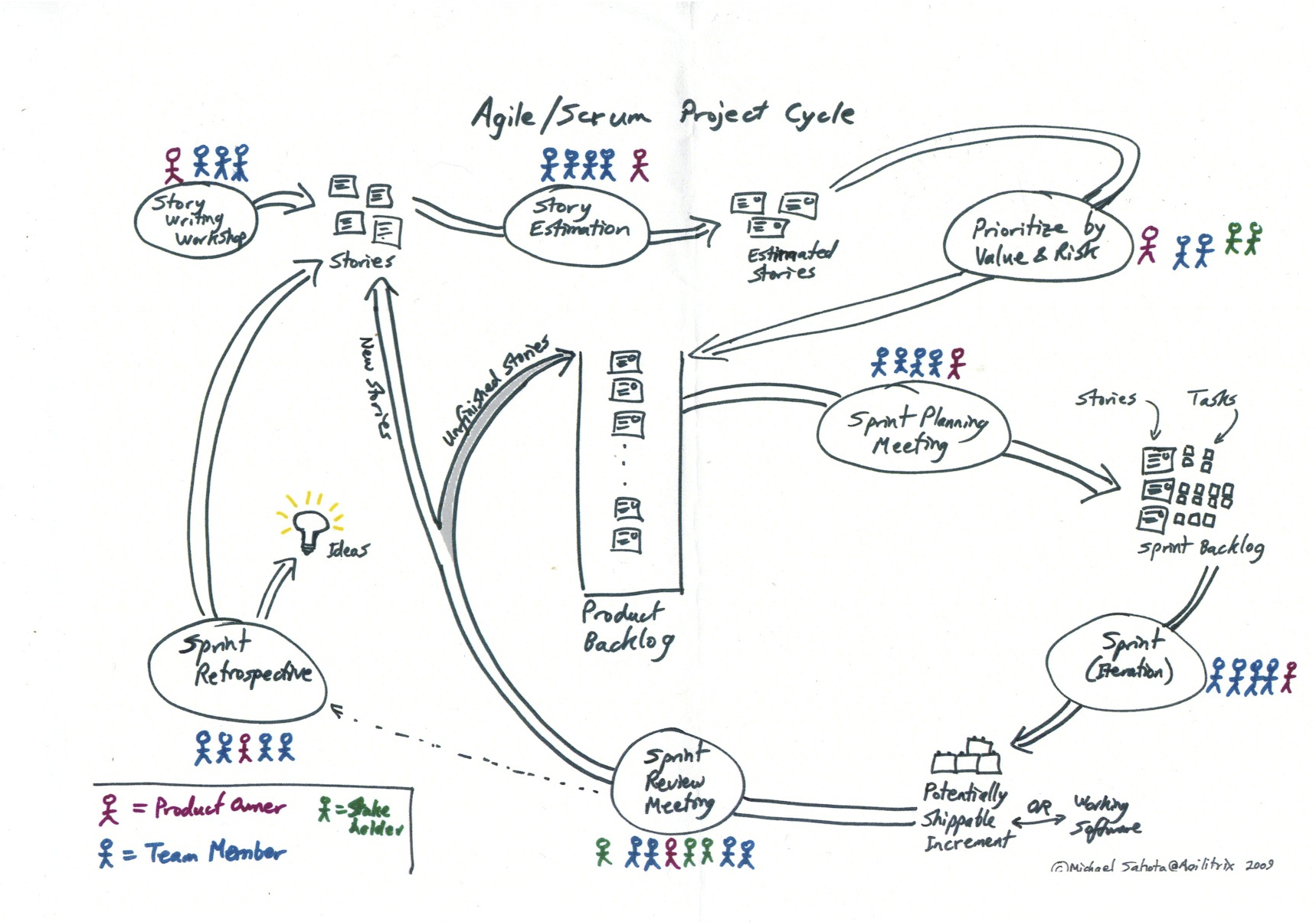
Typically you wouldn’t think a group of software development methods would have much to offer the running of roleplaying games (rpgs), but Agile in fact can do a lot for your games. Built upon a series of “lightweight” software development methods that evolved throughout the 1990s in reaction to the heavily regimented waterfall approach, the Agile Movement was born in February 2001 when a group of software developers met in Utah to establish a better way for engineering software that values individuals and their collaborations over the processes and tools, and encourages flexibility and continuous integration rather than rigidly following a pre-established plan. To accomplish this Agile advocates breaking tasks down into smaller increments and maximize the amount of work not done. This is not to say that there aren’t milestones that you’re focused on meeting, but have some flexibility in the path you follow to reach them and the recognition that those goals in and of themselves might change, especially when the date is further out, and you’ll be well on your way to a successful release.
Despite the appearance that the storyteller is the “product owner” and princple driver of the game, rpgs are in fact a collaborate endeavour that relies upon all the players who comprise the “stakeholders/team members” be present and engaged. And like the Agile Method these participants should endeavor to keep communication open and their goals transparent to help ensure that the story is always moving forward. Understandably this can run counter-intuitive to the inclination for side-boarding scenes to keep segments of the plot secret from the other players whose characters aren’t present. This however can in fact contribute to tensions and even distrust between members of the group. While the choice for openness might diminish some of the surprise that might otherwise be enabled, running the scenes in the open not only serves to invest the “stakeholders/team members” in all aspects of the story in the same way that Agile works to keep participants informed and engaged, but helps build a healthier group dynamic thanks to the camaraderie it engenders – plus as we’ve mentioned before spoilers don’t necessarily mean diminished enjoyment.
This doesn’t mean you can’t surprise the players, and will find you still often do, it just means finding other – and in my opinion – more inventive ways for doing so, but recognizing the flexibility required on the storyteller’s part. Whether it because the players prove uncannily adapt at putting the plot together, or simply derailing your carefully laid out plans by following a path you hadn’t otherwise anticipated, having tools to help handle such situations certainly mitigates any panic you might otherwise undergo. To this end the Agile methodology suggests breaking tasks down into more manageable chunks, similar to the type of reasoning behind Island Theory. The flexibility it affords – especially when running for a group that has a rotating cast – ensures that you can shift around elements of the story to suit the circumstances of the gameplay that can often be very organic and prone to moving in unexpected directions. However with the caveat that the amount of work required be minimized, one that I’ve employed to great success, having learned some time ago that the “documentation” of a game can be never ending and that in reality only a fraction of which ever gets used.
I’m sure this isn’t the only discipline that has tools which could be employed to enhance gaming. Have you encountered something along these lines?
We’d certainly like to hear about it.


![Game Design: Island Theory [Repost]](http://www.cultureaddicthistorynerd.com/wordpress/wp-content/uploads/2011/04/gaming-150x150.jpg)





































